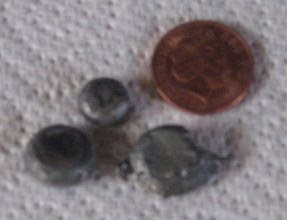
Secondly, no stainless steel without an iron base. Are you sure you used enough alkali? But the ‘red solution’ may indicate the Fe(OH)3.nH2O has peptised, that is: gone into a colloidal state which runs right through the filter! Look up ‘colloid’ and ‘pertisation’, if needed. Fresh Fe(OH)3.nH2O is prone to peptisation when washing the precipitate because by washing the ionic strength of the washing water starts to drop a lot. A simple counter measure is not to wash too thoroughly (thereby losing small amounts of the target Cr…) or allowing the precipitate to mature somewhat. You may also simmer the slurry (obtained by adding the alkali to the solution of SS 18/0 in HCl) for a while. Washing the precipitate with strong NH4Cl (instead of water, thereby keeping the ionic strength high!) will also prevent peptisation.
After separation you then obtain a solution of sodium chromite [+III] (NaCr(OH)4), treat this with HCl, to about pH = 7 to obtain Cr(OH)3.nH2O, wash thoroughly and semi-calcine (>500 C) to dry to Cr2O3. At to low pH you’ll obviously redissolve to CrCl3.
Pure chromium is prepared industrially via aluminothermy from Cr2O3. I’ve done this myself and the metal forms as beautiful reguli of clean skinned metal You’ll need Al powder and fluorite (CaF2) for this reaction.
[Edited on 22-3-2011 by blogfast25]




























